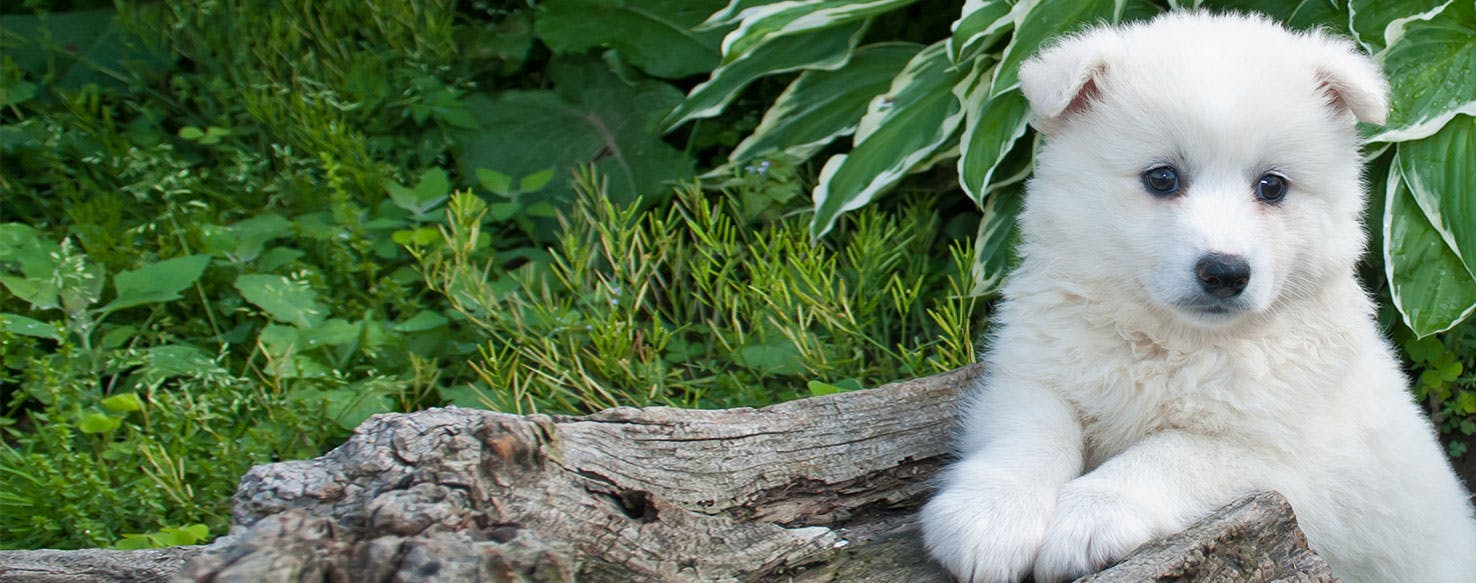- Home
- The Daily Wag!
- Behavior
- Why Do Dogs Play On Their Back
Why Do Dogs Play On Their Back

Common
Normal
Introduction
Your dog sometimes shows his belly when he plays. You’ll be playing tug-o-war with his favorite toy and he’ll roll onto his back and stare at you. You can be outside playing fetch and he’ll stop to roll on his back, which of course makes you fetch the ball instead of him. He might entice you to play by play bowing, which is when his weight is on his front paws and tail is in the air, only to roll over onto his back. If you’ve ever watched him play with another dog, they’ll chase each other around, “bite” each other, jump, and one will sometimes lay on his back.
Is your dog just in this to sneak in a few extra belly rubs or is there more reason to playing on his back?
The Root of the Behavior
Not all dogs roll over when they play, but many do and the context differs between humans and dogs playing and dogs and dogs playing. A study of dogs showed that only 27 out of 40 pairs of mixed sized dogs rolled over during play. The study showed that dogs rolled over to evade a bite, launch an attack, or solicit a new partner.
Often when dogs play with each other, they take turns being submissive, especially when teaching puppies how to play. They curb their aggression to meet the puppies’ levels and make sure it’s safe. This results in little dogs atop large dogs lying on their backs. However, the study determined that most of the times the dogs rolled over were a defensive move, not submissive.
When he plays with you, your four-legged friend rolls onto his back for a few adorable reasons. He might be conveying his happiness. You two might be having so much fun that he rolls onto his back as a sign of enjoyment. He also trusts you. If a dog lies on his back in front of you, he is making himself very vulnerable and accessible. For this to happen, there has to be a great deal of trust between you two.
He might also be hot. If the weather is warm and you are playing for a long time, he might want to cool down. By showing you his tummy, he feels the breeze and gets a break. The breeze feels good on his bare tummy and he can cool down.
Your dog might also have an itch on his back and you’ve been so focused on throwing his ball you completely ignored it. In this case, he rolls onto his back. At the same time, he might have an itch on his tummy and desire a coveted belly rub.
Need advice about your pet's health?
Get answers fast from a veterinary professional 24/7 in the Wag! App.
Get Vet ChatEncouraging the Behavior
Rolling on the back is a natural way for dogs to play, both with each other and with humans. It helps them communicate their next moves to other dogs and to humans it communicates trust.
Dogs playing with each other and rolling on their backs is fun for them. The only time it isn’t fun is when play fighting escalates to real fighting. To identify the differences between play fighting and real fighting, you’ll notice a dog who is serious will stiffen. A dog shows that he is ready to fight when his body tightens and his ears might stick straight up. If he is chasing he’ll sprint, not bounce, and his bites will be harder and faster.
When a dog plays with their human, he’ll typically only roll over if he trusts the human, so it shouldn’t be a problem if he’s playing with others. Keep an eye out for things he might roll in, like mud, leaves, poop, or sand. You both might become so excited you don’t notice your environment and then you have a mess to clean up after all the fun.
If it’s a hot day and you notice your dog rolling over to catch a breeze, bring out his water bowl for a break. You two can have a water break and resume when you’re more comfortable.
Other Solutions and Considerations
If you come across an unfamiliar dog who is lying on his back and staring at you, he might not be showing submission. It’s never wise to pet a dog you don’t know, but in this case, the dog might be more on guard than you realize. A dog who is submissive and happy while on his back will have sort of floppy body, welcoming eyes, and they’ll probably roll around a bit. If you see a dog like this, it’s probably safe to approach, but ask the owner first if it’s not your dog.
If the dog is stiff, tense, looks away, licks his lips, or has dialated pupils, this is not the time to approach. Not every dog wants his belly rubbed or is playing when on his back. Be sure to respect the dog’s space and ask before approaching. Talk to your vet or a trainer if you’re not sure what behavior your dog is exhibiting. They can explain to you how your dog is communicating with you.
Conclusion
It feels good to know that your dog trusts you enough to expose his belly, or is comfortable enough to beg for belly rubs every time you play. Make sure you respect your dog’s boundaries, keep an eye if he is playing with other dogs and make sure things don’t get too ruff.
Written by a Miniature Yorkie lover Stephanie Molkentin
Veterinary reviewed by:
Published: 03/09/2018, edited: 01/30/2020
More articles by Stephanie Molkentin
